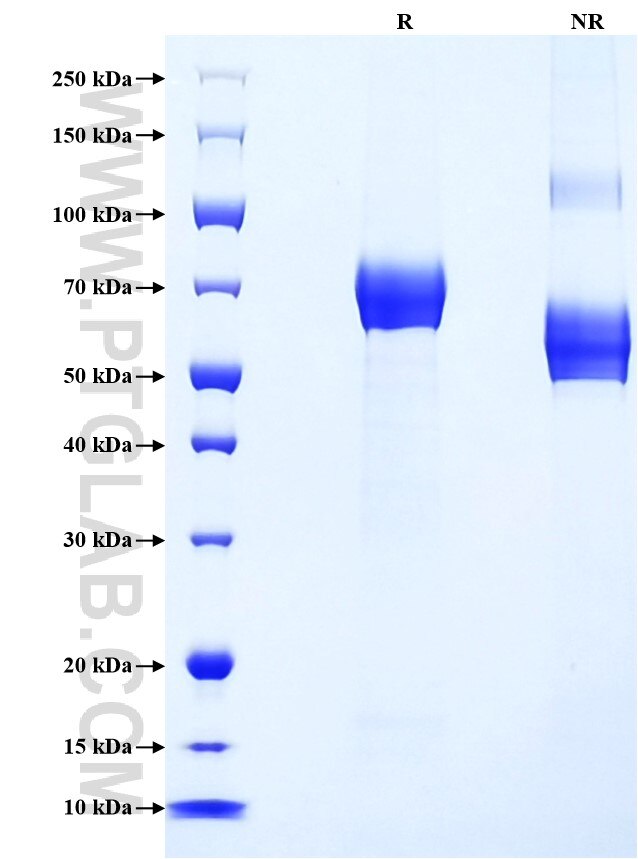Recombinant Human EPHA2 protein (Myc Tag, His Tag)
Species
Human
Purity
>90 %, SDS-PAGE
Tag
Myc Tag, His Tag
Activity
not tested
Cat no : Eg0146
Validation Data Gallery
Product Information
| Purity | >90 %, SDS-PAGE |
| Endotoxin | <0.1 EU/μg protein, LAL method |
| Activity |
Not tested |
| Expression | HEK293-derived Human EPHA2 protein Ala24-Asn534 (Accession# P29317-1) with a Myc tag and a His tag at the C-terminus. |
| GeneID | 1969 |
| Accession | P29317-1 |
| PredictedSize | 61.2 kDa |
| SDS-PAGE | 60-85 kDa, reducing (R) conditions |
| Formulation | Lyophilized from 0.22 μm filtered solution in PBS, pH 7.4. Normally 5% trehalose and 5% mannitol are added as protectants before lyophilization. |
| Reconstitution | Briefly centrifuge the tube before opening. Reconstitute at 0.1-0.5 mg/mL in sterile water. |
| Storage Conditions |
It is recommended that the protein be aliquoted for optimal storage. Avoid repeated freeze-thaw cycles.
|
| Shipping | The product is shipped at ambient temperature. Upon receipt, store it immediately at the recommended temperature. |
Background
EPHA2 (Ephrin type-A receptor 2) belongs to the receptor tyrosine kinase (RTK) family, with 16 known receptors and 9 known membrane-bound ligands in all species. Based on the extracellular domain sequence homology, structure, and binding affinity, Eph receptors and their ephrin ligands can be divided into A and B subtypes. EPHA2 contains a conserved N-terminal ligand-bound extracellular domain, a transmembrane domain, and a conserved tyrosine kinase domain. EPHA2 interacts with ephrin-A family ligands residing on the neighboring cell and induce diverse signaling networks following cell-to-cell contact. EPHA2 is highly produced in tumor tissues and represents a potential target for treating malignant tumors.
References:
1. M P Beckmann, et al. (1994) EMBO J. 13(16):3757-62. 2. Ping Zhao, et al. (2021) J Genet Genomics. 48(4):261-267. 3. Ta Xiao, et al. (2020) J Hematol Oncol. 13(1):114.

